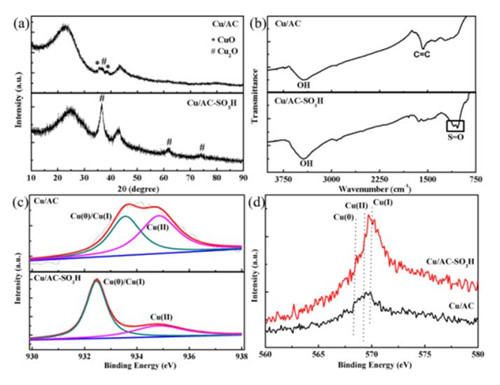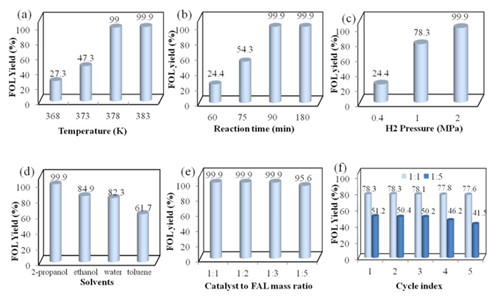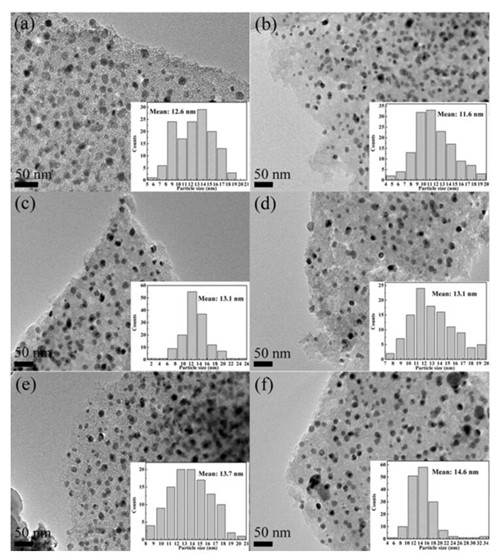Recently, the Institute of Solid State Physics, Institute of Solid State Physics, Chinese Academy of Sciences, has made new progress in the field of catalytic conversion of biomass. Relevant research results have been published in the ACS Sustainable Chemistry & Engineering (ACS Sustainable Chem. Eng., 5, 2172−2180 (2017)) and Journal of Molecular Catalysis A: Chemical (J. Mol.). Catal. A: Chem. 429, 51–59 (2017)). At present, the synthesis of fuel oils (gasoline, diesel and aviation oils) and related chemicals mainly comes from the petrochemical industry. With the gradual reduction of fossil resources and increasing environmental pollution, it is always scientific to find renewable energy sources for alternative fossil resources. One of the research hotspots. While not affecting the balance of the global economy at the current stage, biomass energy, as a clean and renewable energy source, has attracted more and more attention from researchers. Furfural, as an important biomass platform molecule, is mainly derived from the hydrolysis of hemicellulose and can be transformed into different high value-added chemicals through processes such as hydrogenation, oxidation, and esterification. The hydrogenation of furfural can produce furfuryl alcohol, tetrahydrofurfuryl alcohol, 2-methylfuran, 2-methyltetrahydrofuran, pentanediol, etc. These important chemicals have a wide range of applications and can be used as oil additives, solvents, and pharmaceutical intermediates. Wait. At present, such conversion is mainly based on precious metal catalysts. Although its catalytic activity is high, its shortcomings such as poor selectivity, scarcity of resources, and high price limit its commercial application. For this reason, non-precious metal catalysts with abundant resources for research and development, simple preparation, and environmental friendliness have gradually become research hotspots in this field. Relevant researchers have relied on the "Integrated Biomass Conversion Catalyst Research Device" of the scientific research equipment development project of the Chinese Academy of Sciences to develop copper-based and nickel-based non-precious metal catalysts with superior performance. First, a sulfonic acid-modified copper-based catalyst was successfully prepared by a chemical reduction method. Compared with the traditional copper catalysts, the catalysts constructed by the above methods have higher copper particle dispersion and degree of reduction, and have excellent adsorption of reactants (Fig. 1). Under mild reaction conditions (378 K, 0.4 MPa and 2 h), the conversion and selectivity of furfural to hydrogenation to furfuryl alcohol can reach up to 100%, and has good cycle stability (Fig. 2). In addition, the modified catalyst also exhibits superior performance in the transfer hydrogenation to furfuryl alcohol. The relevant research results were published in ACS Sustainable Chemistry & Engineering (ACS Sustain. Chem. Eng., 5, 2172−2180 (2017)). Afterwards, the relevant personnel prepared a nitrogen-doped nickel-based catalyst through a simple pyrolysis process. By controlling the calcining temperature and nitrogen content, a nickel base with a large specific surface area, a uniform nickel particle size, a nitrogen-doped type, and a controllable content was prepared. Nanocatalyst (Figure 3). Under mild reaction conditions (353K, 4 MPa and 3 h), the conversion and selectivity of furfural to deep hydrogenation to tetrahydrofurfuryl alcohol reached 100%, and it had excellent stability. In addition, the prepared nitrogen-doped catalysts show greater advantages in transfer hydrogenation relative to conventional nickel catalysts. The results of related studies are published in the Journal of Molecular Catalysis A: Chemical (J. Mol. Catal. A: Chem. 429, 51-59 (2017)). The work was funded by the Chinese Academy of Sciences Equipment Development Project, the National Natural Science Foundation, the Chinese Academy of Sciences 100-person Plan and the International Innovation Team Project. Horizontal Water Circulation Pump Horizontal Water Circulation Pump,Water Circulation Pump,Circulation Pump,Multistage Water Pump Shanghai NuoSai Pump Manufacturing Co., Ltd. , https://www.nuosai.net
Figure 1. Characterization of sulfonic acid-modified copper-based catalysts (a) XRD; (b) Infrared; (c) XPS; (d) XAES. 
Figure 2. Effect of reaction parameters on furfural hydrogenation performance and catalyst cycle stability. 

Figure 3. Effect of pre-treatment conditions on the morphology and hydrogenation performance of Ni-based Ni-based catalysts (Ni/NAC) (a) No doping of N; (b) 973K, 1h; (c) 1073K, 0.5h; (d 1073K, 1h; (e) 1073K, 2h; (f) 1173K, 1h.